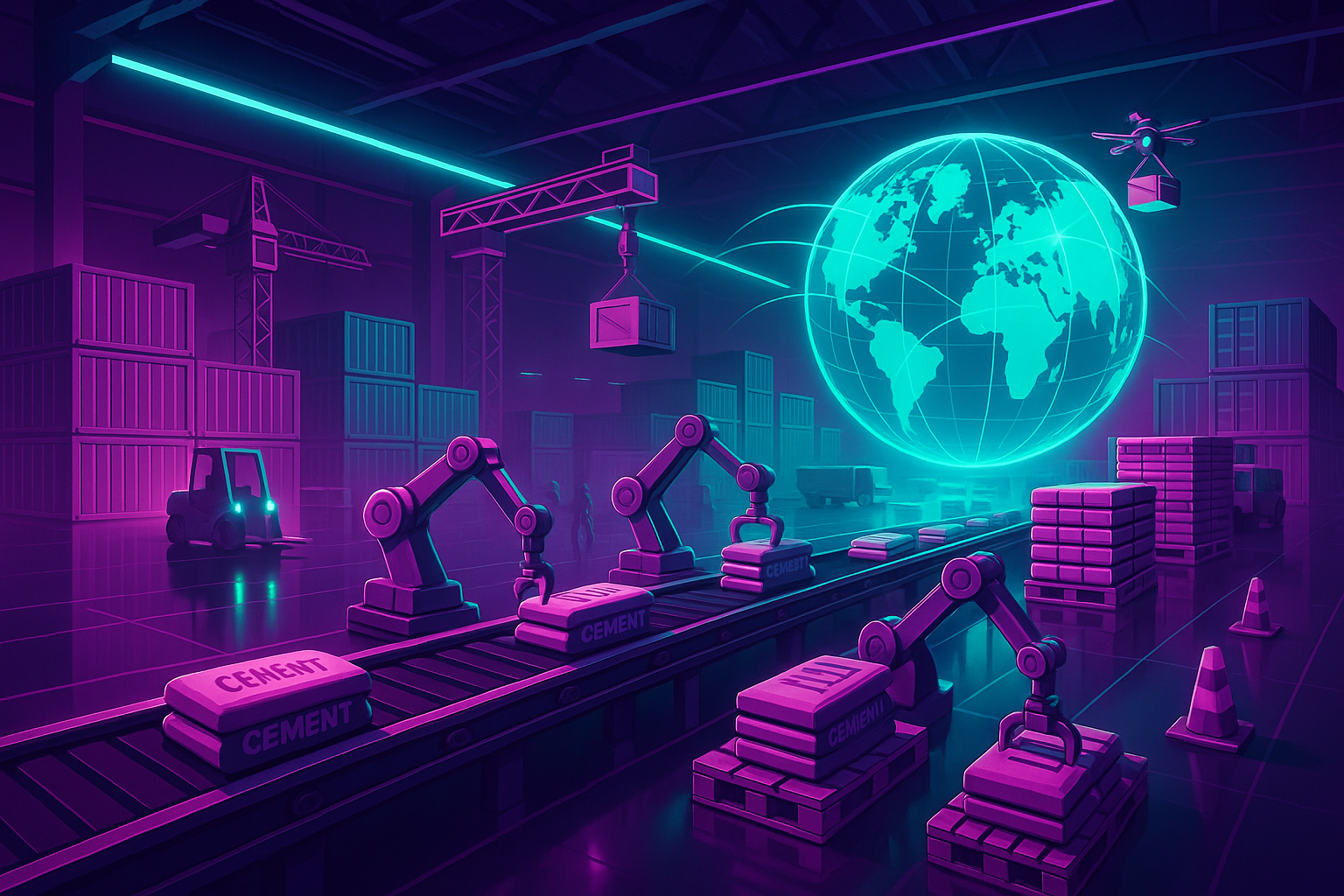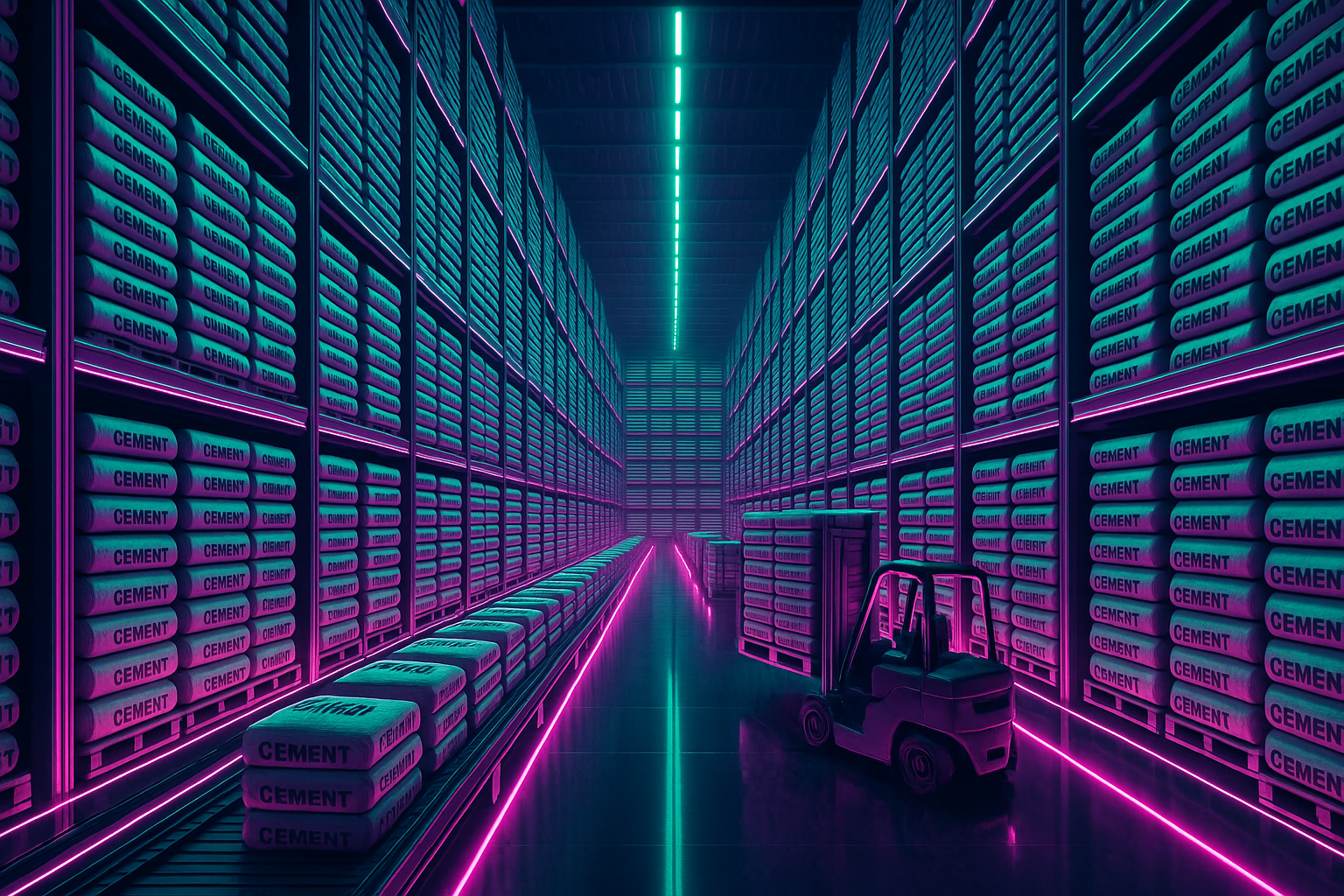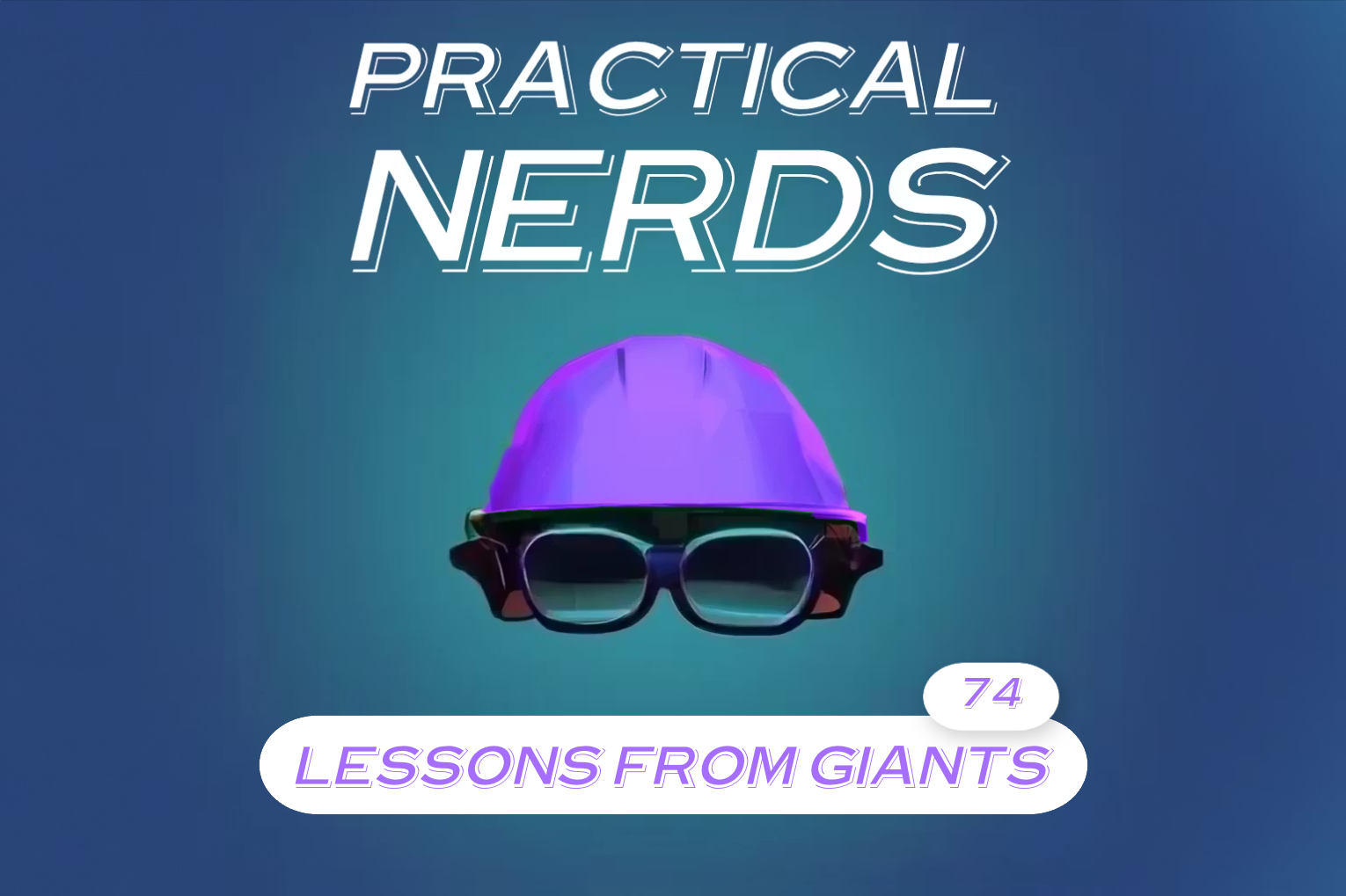Ever wondered why some companies survive decades while others vanish overnight? We dissect the DNA of truly exceptional businesses that transcend market cycles. These aren't your typical unicorn stories - they're the 1,150 companies that quietly dominate their industries.
This Week On Practical Nerds - tl;dr
Hyper-repeatable supply units create industrial scale advantages
Monopolistic toll booth dynamics generate unstoppable pricing power
Multi-supply capacity provides resilience against market disruption
Cost inversion transforms variable expenses into fixed investments
Predictable demand patterns enable sustainable competitive advantages
🎧 Listen To This Practical Nerds Episode
Hyper-repeatable supply units create industrial scale advantages
How do companies industrialize single products into billion-dollar empires?
We've developed a particular appreciation for what I call "hyper-repeatable units of supply." When Shub and I examine companies like Holcim, Heidelberg, and CRH - cement manufacturers valued between $25-40 billion each - we notice something fascinating about their business architecture.
These companies have mastered something many businesses struggle with: they produce what is essentially a paste called cement that can be manufactured in virtually identical fashion anywhere in the world. My observation is that cement represents one of mankind's most-used building materials after water, yet it requires no customization across different markets or applications.
This insight extends beyond construction materials. Shub and I see similar patterns in companies like Coca-Cola, where a single syrup formula has remained largely unchanged for over a century. The beverage giant doesn't need to reinvent their core product for different markets - they've created something so fundamentally useful that global standardization becomes an advantage rather than a limitation.
What strikes Shub and me about these businesses is how they've inverted the typical scaling challenge. Most companies face increasing complexity as they grow - more markets mean more variations, more customization, more operational headaches. But the hyper-repeatable supply companies have eliminated this friction entirely.
I note that when you achieve this level of repeatability, you don't need to be a software company to benefit from industrial-scale efficiencies. You can apply the same principles to physical products, manufacturing processes, and distribution networks. The key is identifying that one core unit that can be endlessly replicated without modification.
Our observation is that these companies have essentially created the physical world equivalent of software scalability. Once you perfect the formula, whether it's cement composition or beverage syrup, you can deploy it globally without losing effectiveness. The marginal cost of each additional unit approaches zero while the value proposition remains constant.
This creates what Shub and I see as a fundamental competitive advantage: while competitors struggle with the complexity of customization, the hyper-repeatable supply companies focus entirely on perfecting their single offering and optimizing their distribution networks. They've chosen depth over breadth, and in doing so, they've achieved something remarkable - global relevance through intentional simplicity.

Monopolistic toll booth dynamics generate unstoppable pricing power
Why do the best companies charge fees instead of selling products?
Shub has identified what he considers one of the most powerful business model characteristics: the ability to function as a "toll booth" in essential economic processes. His framework suggests that the most exceptional businesses don't just participate in markets - they become unavoidable infrastructure that others must pay to access.
Shub and I find Visa's model particularly illuminating in this regard. The company processes trillions in transactions annually yet owns no banks, issues no credit, and takes virtually no financial risk. They've positioned themselves as the essential middleware in digital payments - if you want to participate in the electronic economy, you pay their fee.
What we observe about toll booth businesses is that they've transcended normal competitive dynamics. Take Coca-Cola's relationship with bottlers, for instance. When you're a bottling operation, you essentially have two viable options at scale: Coca-Cola or Pepsi. Everyone else operates at such small scale that they're not really competitive alternatives. So Coca-Cola functions as brand and ingredient infrastructure that bottlers must access to remain viable.
Shub's insight is that this creates what economists call network effects, but with a twist. The more people who use Visa's payment infrastructure, the more valuable it becomes to merchants. The more merchants who accept Visa, the more essential it becomes for consumers. Soon, you're not competing with other payment processors - you are the payment system.
Our analysis suggests that toll booth dynamics work because they exploit a fundamental economic principle: infrastructure consolidation. Just as it makes no sense to build competing highway systems for every route, it becomes inefficient to maintain parallel payment networks, enterprise software systems, or global beverage distribution networks.
Shub and I see similar patterns in SAP's enterprise software dominance. Once a company has integrated SAP into their operations, switching costs become prohibitive. SAP doesn't just sell software - they become the operational infrastructure that businesses can't function without. The pricing power this creates is remarkable because the alternative isn't just buying a competitor's product - it's completely rebuilding your business processes.
What fascinates us about these toll booth companies is how they've solved the pricing problem that plagues most businesses. Traditional companies must justify their prices based on input costs, competitor pricing, or value delivered. Toll booth companies can charge based on the cost of NOT using their service - which is often infinitely higher than their fees.
TÜV Services provides another example we find instructive. In Germany and increasingly globally, if you want industrial equipment approved, you need the TÜV stamp. They've become the standard for technical certification. You don't shop around for the cheapest certification - you go to TÜV because that's what the market accepts.
Our observation is that the most successful toll booth businesses share a common characteristic: they've made themselves indispensable to processes that others can't easily replicate or replace. They've identified chokepoints in essential economic flows and positioned themselves as the unavoidable solution.

Multi-supply capacity provides resilience against market disruption
How do great companies survive when their core markets collapse?
Shub and I have observed that market disruption reveals which companies were truly exceptional and which were simply riding favorable market conditions. The difference often comes down to what we call "multi-supply capacity" - the ability to serve markets through multiple, complementary approaches.
BlackBerry's collapse provides a stark illustration of what happens when companies over-specialize. For nearly a decade, BlackBerry defined business mobile communication. Executives couldn't imagine working without their BlackBerry keyboards. The company seemed invincible in its niche. Then Apple launched the iPhone with its touchscreen interface and app ecosystem. Within two years, BlackBerry was essentially irrelevant.
My analysis of BlackBerry's failure centers on their singular focus. They had one product concept: small screen, hardware keyboard, email optimization. When market preferences shifted toward large touchscreens and multimedia applications, they had no secondary capacity to leverage. They were essentially a one-trick pony in a market that had moved beyond their trick.
Shub and I contrast this with Coca-Cola's approach to market diversification. They're not just a cola company - they're a beverage infrastructure company. When consumers want vanilla flavor, they launch Vanilla Coke. When they want orange, there's Fanta. When they want water, there's Dasani. The brand recognition and distribution infrastructure remain constant while the product offerings flex with changing consumer preferences.
The German company PERI exemplifies what we consider ideal multi-supply capacity. They started manufacturing reusable formwork for construction projects. Rather than limiting themselves to manufacturing, they built rental networks across 60+ countries. Now they have both production capacity and distribution capacity. If formwork demand drops in Chile, they can redistribute inventory through their Brazilian operations. If one product line faces disruption, they can pivot their rental infrastructure to serve different construction needs.
Our observation is that multi-supply capacity works because it creates what we call "resilience optionality." Companies with diverse supply capabilities can respond to market changes by recombining, redirecting, or repurposing their existing assets rather than having to build entirely new businesses.
Shub and I see this pattern in Netflix's evolution from DVD-by-mail to streaming to content production. Each transition leveraged existing capabilities while adding new ones. The customer relationships from DVD service informed their streaming strategy. The data from streaming informed their content creation. They didn't abandon their previous capabilities - they layered new ones on top.
I note that geographic diversification provides another form of multi-supply capacity. Companies with truly global operations benefit from the fact that different regions operate on different economic cycles. When European markets contract, Asian markets might be expanding. When residential construction slows in one region, infrastructure spending might be accelerating in another.
What we find particularly interesting about successful multi-supply companies is how they've solved the diversification paradox. Most companies that try to diversify end up diluting their focus and weakening their competitive position. But the exceptional ones have identified underlying capabilities that can be applied across multiple markets or applications.
The key insight from our analysis is that multi-supply capacity isn't about having multiple unrelated businesses - it's about having multiple ways to deploy the same core competencies. Coca-Cola's core competency isn't making cola - it's managing global beverage brands and distribution networks. PERI's core competency isn't making formwork - it's providing construction productivity solutions through both manufacturing and rental networks.

Cost inversion can transforms variable expenses into fixed investments
How do exceptional companies flip traditional cost structures?
I've identified what I consider one of the most powerful business model advantages: the ability to operate in what would traditionally be a variable cost market while converting those costs into fixed investments. This concept, which I call "cost inversion," represents a fundamental shift in how exceptional businesses approach their economics.
Most markets operate on variable cost structures. If you're running a traditional consulting business, your costs scale directly with revenue - more clients mean more consultants, more office space, more administrative overhead. But some companies have found ways to make one-time investments that can then be leveraged infinitely without proportional cost increases.
Shub and I see this most clearly in companies like Visa, MasterCard, and payment processors like Stripe. These businesses invested once in building payment processing infrastructure - a significant and complex undertaking that required substantial upfront capital and technical expertise. But once that infrastructure exists, they can process billions in transactions without their costs scaling linearly with volume.
Our portfolio company in B2B cross-border payments exemplifies this principle. It took considerable time and investment to build the initial processing capability, but now it processes billions in GTV (Gross Transaction Volume) while maintaining relatively fixed operational costs. The beauty of this model is that increased volume actually improves unit economics rather than degrading them.
What Shub and I find particularly compelling about cost inversion is how it creates what I call "infinite reutilization." Once you've made the fixed cost investment in infrastructure, technology, or capacity, you can sell access to that capacity on a variable cost basis to your customers. Your clients pay based on their usage, but your costs remain largely fixed.
This creates an almost unbeatable competitive dynamic. Traditional competitors operating on variable cost structures can't match your pricing because their costs scale with volume. Meanwhile, your fixed cost structure means that additional volume actually improves your margins rather than straining them.
We observe this pattern in cloud infrastructure providers like AWS. Amazon made massive fixed investments in data centers, servers, and networking infrastructure. But they sell that capacity on a variable basis - customers pay for what they use. The more customers who use AWS, the better Amazon's unit economics become, while traditional IT departments operating on variable cost structures can't compete on price or scalability.
My analysis suggests that cost inversion works best in markets where the underlying service would traditionally require significant variable costs. If building payment processing infrastructure weren't so complex and expensive, anyone could do it. But because it requires substantial fixed investments that most companies can't or won't make, it creates a natural barrier to entry that protects the companies that have made those investments.

Predictable demand patterns enable sustainable competitive advantages
Why do resilient businesses avoid unpredictable market dynamics?
Through our analysis of exceptional businesses, Shub and I have noticed that the most resilient companies operate in markets with what we call "predictable demand patterns." This isn't about growth predictability - it's about understanding the fundamental drivers of demand and ensuring they're unlikely to change dramatically.
Shub's observation about insurance companies illustrates this principle well. Property insurance works because casualty rates are statistically predictable over time. Buffett has written extensively about this in his annual letters - you receive upfront cash flow from 100% of your portfolio, but only a calculable percentage will actually have claims. The casualty amounts are also predictable based on historical data.
This predictability allows insurance companies to price their products appropriately and maintain profitability over long periods. But when demand patterns become unpredictable - like during COVID when health insurance companies saw dramatic swings in claim patterns - even well-run insurance businesses can face significant challenges.
Shub and I contrast this with businesses that operate in highly cyclical or unpredictable markets. Historically, semiconductor companies have been notoriously cyclical, with demand swinging dramatically based on technology cycles, economic conditions, and inventory patterns. While companies like Nvidia are currently riding favorable market conditions, Shub notes that semiconductor companies have traditionally been the opposite of predictable.
Our analysis suggests that predictable demand patterns create several competitive advantages. First, they enable better capital allocation decisions. When you can reasonably predict future demand, you can invest in capacity, technology, and market development with greater confidence. Second, they allow for more efficient operations since you're not constantly adjusting to demand volatility.
Shub and I see this principle clearly in businesses like cement manufacturers. Construction activity has seasonal patterns and economic cycles, but the fundamental demand for cement remains relatively stable over longer periods. People will continue building structures, and cement will remain the primary building material. This predictability allows companies like Holcim and Heidelberg to make long-term investments in production capacity and distribution networks.
What we find interesting is how some exceptional companies have actually created predictable demand patterns through their business model design. SAP's ERP software doesn't just benefit from predictable demand - it creates it. Once companies integrate SAP into their operations, they become locked into predictable, recurring relationships. The switching costs are so high that SAP can reasonably predict customer behavior years in advance.
The railroad companies we discussed provide another example. Once railroad infrastructure is built, it creates predictable transportation demand patterns. Goods need to move from specific origins to specific destinations, and the railroad owns the most efficient route. This creates what Shub and I see as "infrastructure-driven predictability" - demand patterns that are inherently stable because they're based on physical and economic necessities rather than consumer preferences.
Our observation is that businesses operating in unpredictable markets face constant resource allocation challenges. They must maintain excess capacity for demand spikes while risking underutilization during downturns. They struggle to make long-term investments because future demand is uncertain. This creates opportunities for companies that can bring predictability to unpredictable markets - often through the toll booth dynamics we discussed earlier.
Conclusion: The Exceptional Business Framework
After analyzing these patterns across dozens of exceptional businesses, Shub and I have developed what we call the Exceptional Business Framework - a lens through which to evaluate whether a company has the potential to transcend normal competitive dynamics.
The foundation starts with identifying your hyper-repeatable unit - that one core element of your business that can be replicated identically across infinite markets without losing effectiveness. Cement manufacturers found it in their standardized paste formula. Coca-Cola found it in their syrup concentrate. Complexity kills margins, so the most powerful businesses succeed by making one thing extraordinarily well.
Building toll booth infrastructure represents the next evolution - positioning yourself as unavoidable infrastructure rather than just another vendor. This requires identifying chokepoints in essential economic processes and establishing yourself as the standard solution. Visa didn't just build a payment processor - they became the payment system itself.
Developing multiple supply capacities provides resilience by creating multiple ways to deploy your core competencies. This isn't about diversifying into unrelated businesses, but about leveraging your expertise across different revenue streams. PERI's expansion from manufacturing to rental networks exemplifies this principle perfectly.
Cost inversion transforms your competitive dynamics by making substantial fixed investments that can be leveraged infinitely. Payment processors and cloud providers have mastered this - they invest once in infrastructure, then sell that capacity repeatedly while maintaining largely fixed operational costs.
Finally, maintaining global diversification and predictable demand patterns provides the stability that allows all other elements to function effectively. The most resilient businesses either operate in markets with inherently stable demand or create predictability through their business model design.
What we find most compelling about this framework is how these elements reinforce each other. When combined effectively, they create businesses that don't just compete in markets - they transcend them entirely.
You Can Find More Analysis On The Practical Nerds Podcast
Spotify: https://open.spotify.com/show/1Q86tEwusNGwAmRdDqjFL4
Apple: https://podcasts.apple.com/de/podcast/practical-nerds/id1689880222
Foundamental: https://www.foundamental.com/
Subscribe to the Newsletter: https://www.linkedin.com/newsletters/practical-nerds-7180899738613882881/
Companies Mentioned
PERI: https://www.peri.com/
SAP: https://www.sap.com/
Holcim: https://www.holcim.com/
Heidelberg Materials: https://www.heidelbergmaterials.com/
CRH: https://www.crh.com
Siemens: https://www.siemens.com
Coca-Cola: https://www.coca-cola.com
Visa: https://www.visa.de
MasterCard: https://www.mastercard.de
BlackBerry: https://www.blackberry.com
Nokia: https://www.nokia.com
Kodak: https://www.kodak.com
Follow The Practical Nerds
Patric Hellermann: https://www.linkedin.com/in/aecvc/
Shub Bhattacharya: https://www.linkedin.com/in/shubhankar-bhattacharya-a1063a3/
#BusinessStrategy #Monopoly #ScalableBusiness



